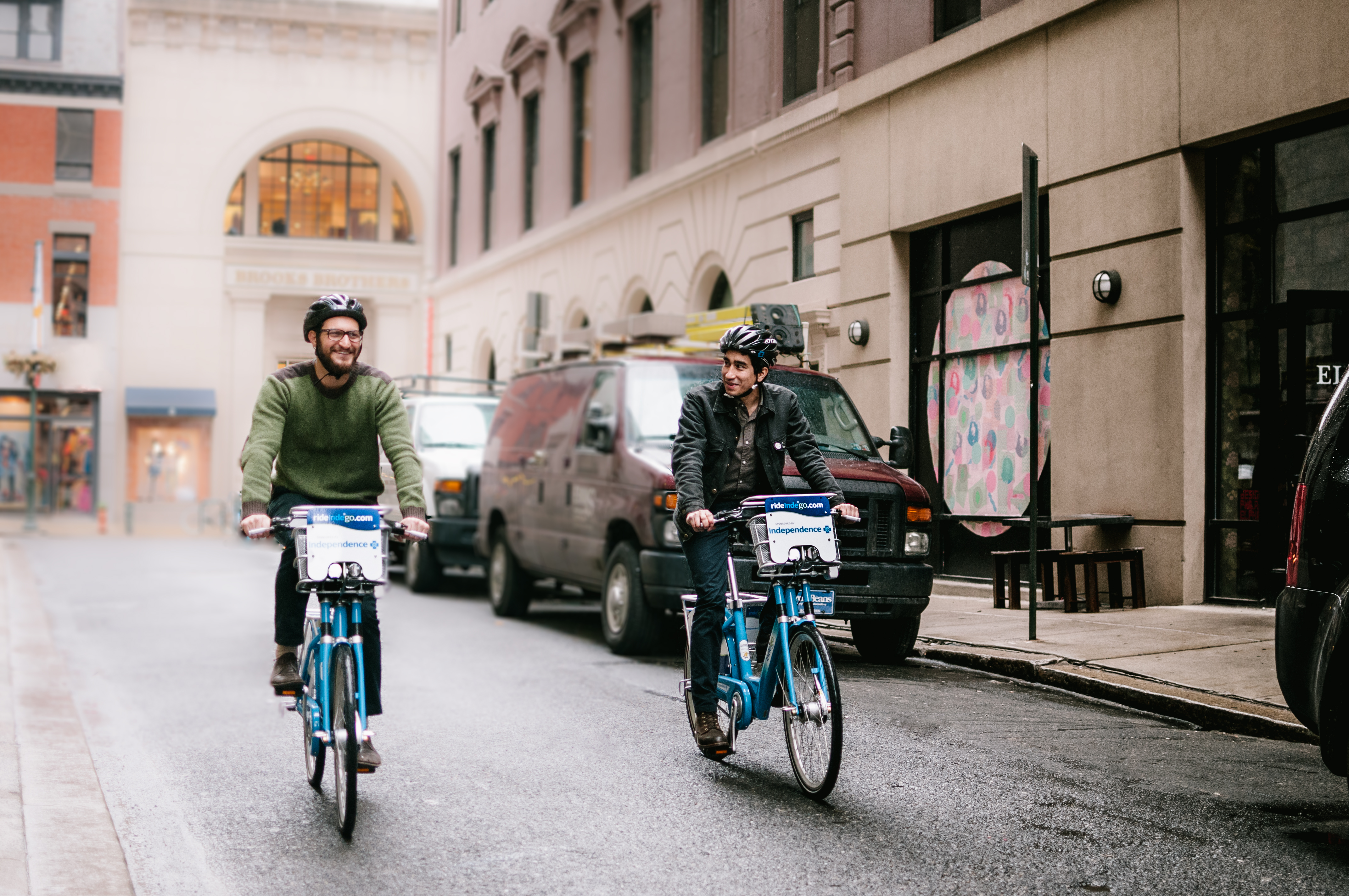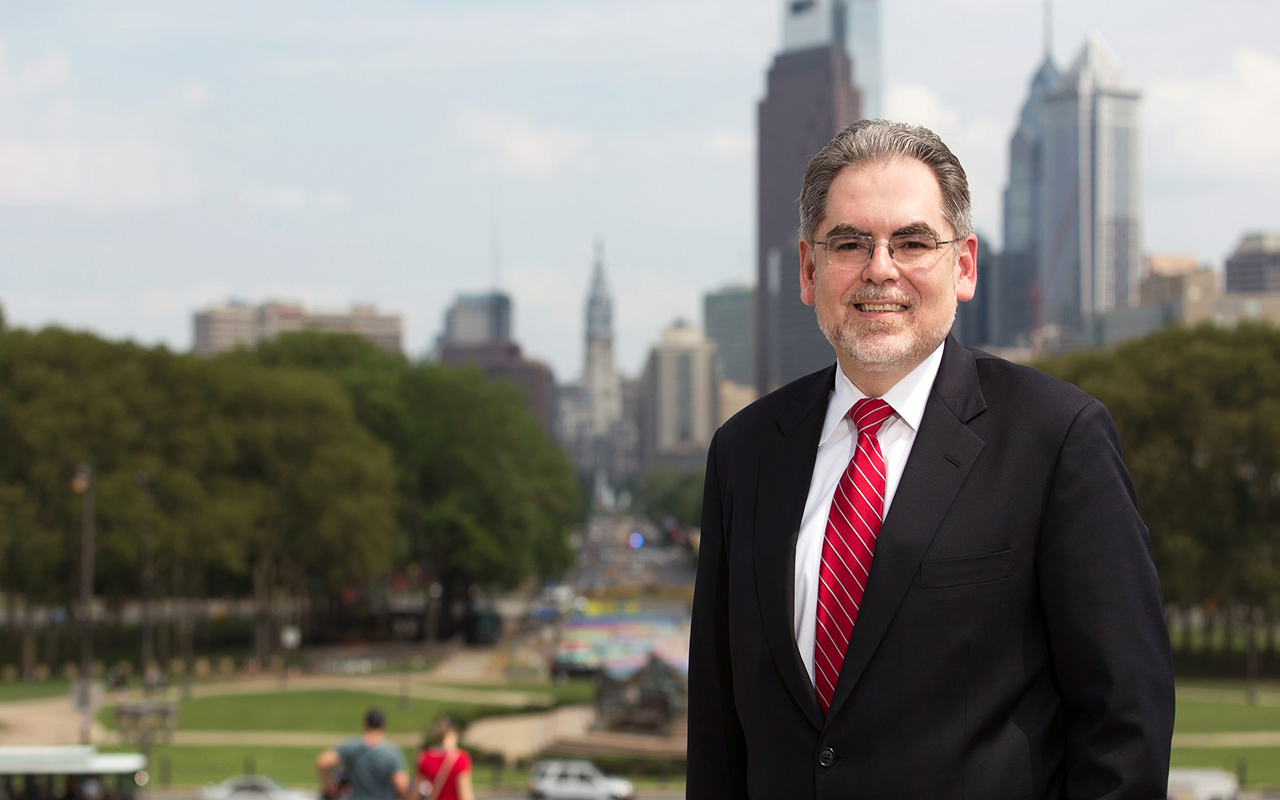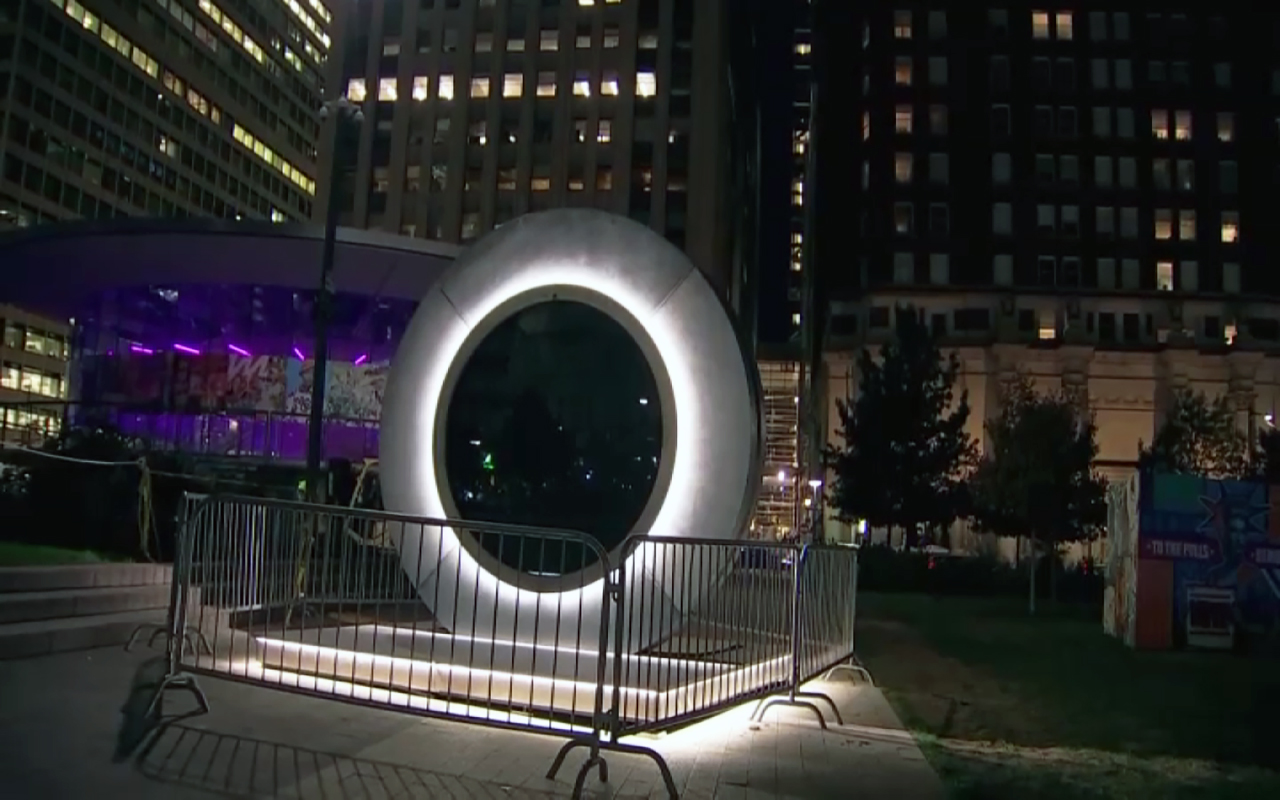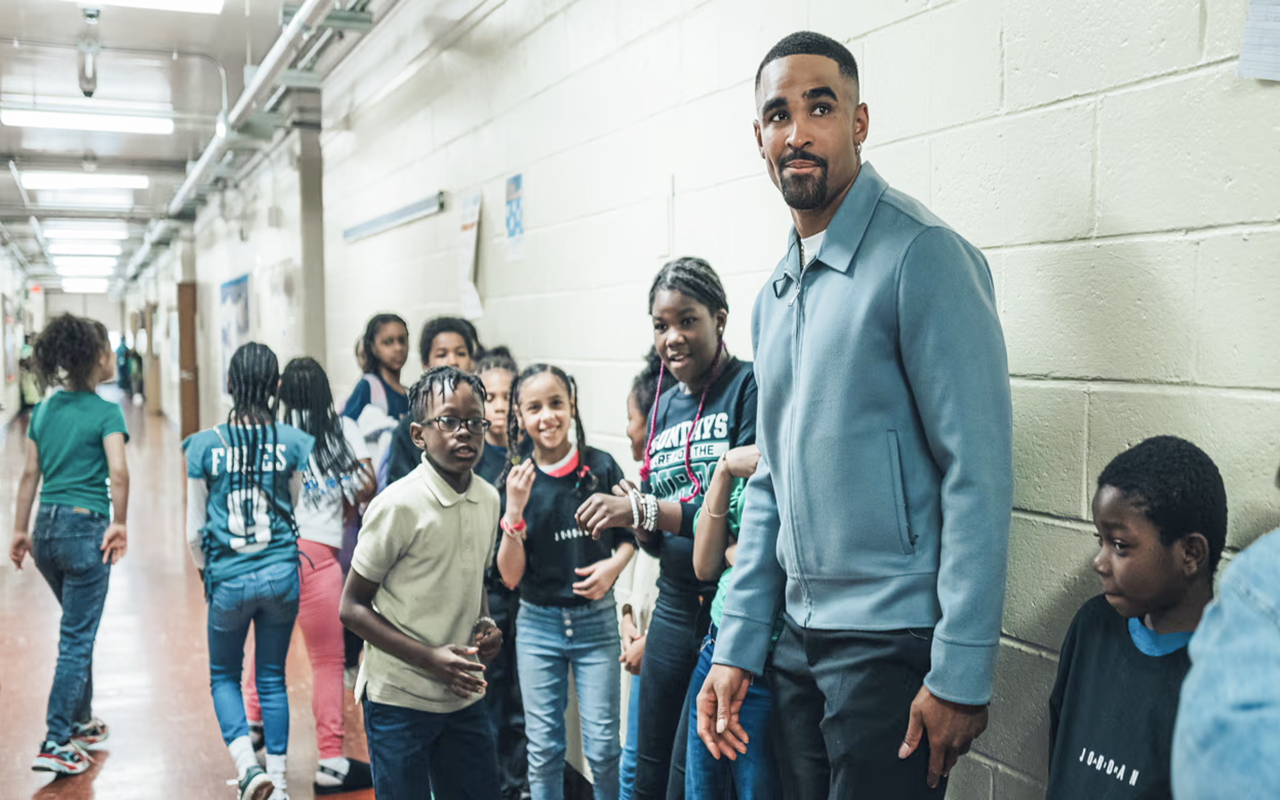
Philadelphia on two wheels
Philly bike share program starts rolling April 23!
Before the beginning of the 20th Century, cities were a great place for bike riding. That is, before planners and engineers began to design metropolis to adapt them to the use of automobiles, demoting those who preferred to use their bikes, public transportation or to simply walk to the category of third-class citizens. The exception was found many years ago in places such as Northern Europe. There are 10 European cities heading the list of the best places in the world to ride your bike, published by Copenhagenzine Design Co in 2014: Amsterdam, Copenhagen, Utrecht, Seville, Bordeaux, Nantes, Antwerp, Eindhoven, Malmö and Berlin. Canada’s Montreal, 14 on the list, is the best positioned North American city. No U.S. city appears among the top 20 of this list. 
However, bicycles did not magically appear in any of these cities. In the case of Denmark, the two-wheel world leader, this took place in the 70’s when the oil crisis rocketed the price of fuel and concerns regarding child safety and automobile accidents convinced politicians to promote the use of bicycles. Meanwhile, a large part of the U.S. population currently depends on automobiles: to go to work, to go shopping, to access different recreational activities. The U.S. contains 5 percent of the world’s population but accumulates 30 percent of the existing automobiles. And this occurs despite the fact that this means of transportation provokes the greatest amount of impacts, is the most costly and the most contaminating. The questioning of the mobility model is precisely one of the causes taking a more prominent role at the time of inoculating the bicycle virus into cities.
All in all, it would be false to think that the use of bicycles in cities is an invention of innovative European cities. In countries such as Mexico or China, traveling on two wheels has, for years, been the alternative of many citizens that for different reasons –generally due to an economic issue—were unable to access a car. The Asian country is not only the greatest bicycle producer world-wide, but it is estimated that one out of every three citizens owns one. That is to say, 500 million in only one nation.

In the US, the number of cyclists has continued to grow in recent years. It is estimated that in the spring of 2014, over 67 million people had ridden a bike at some time during the last twelve months. In 2008, only 47 million had done so. Despite these figures, only 0.62 percent of commutes in the US are made by peddling, according to a report from the American Community Survey with data from the League of American Bicyclists. However, some cities are showing truly incredible figures. Such is the case of Boulder, Colorado, where over 11 percent of its inhabitants ride their bikes to work. Following at a close range are the Californian towns of Palo Alto and Berkley, with 8.4 percent.
The report shows that Philadelphia also holds a good spot on the list of cities with the greatest number of two-wheel commuters. For 2.3 percent of its inhabitants, the bicycle is the preferred means of transportation for commuting. It is the highest percentage among those cities in the country with populations of over one million persons, known as “large cities.”
Philadephia, leader in bike lanes
Long gone are the 80’s and 90’s when the term bike lane seemed like something out of this world. In 1995 only one street, Columbus Boulevard, had a bike lane, as pointed out by the Billy Penn website in one of its articles. Only a few years earlier, in 1991, PennDOT rejected a proposal to unite Center City and West Philadelphia through a bike path on the recently inaugurated Walnut Bridge despite the anger of the bicyclist community, which mobilized without producing any results. Many years passed by until they were able to see a bike lane painted on the floor of the bridge.
In 1992, the death of Dr. Maurice Attie who was run over by a drunk driver while riding his bicycle on the west side of the Schuylkill River pressured the city to take the safety of bicyclists into consideration. At that time, federal funds to promote projects relating to bicycles were beginning to reach Philly. However, the final driving force for the use of two wheelers in the city had a name: the Environmental Protection Agency. In 1995, its threat to reduce transport aid if the region was unable to lower the amount of drivers travelling on their own to 25 percent was conclusive for leaders in Philadelphia to take the need to change the mobility system seriously. By the year 2000, the city already had between 150 and 200 miles of bike lanes.

Currently, lanes reserved for biking total 430 miles, including those that enable mobilization through the heart of the city, but also through the Fairmount Park paths and the idyllic ride along the Schuylkill River. Thus, Philadelphia is the fifth of the large cities in the US with the largest amount of miles available for bike riding. Its 4.3 miles of bicycle lanes per square mile, a measure that allows the density of roads reserved for pikes to be valuated estimated in proportion to all the available space, are only surpassed by San Francisco —leading with 7.8 miles per square mile— Austin and Long Beach.
On the evening of March 20, #BetterMobility2015, the hashtag used during the Mayoral Candidate Forum on mobility, was one of the most commented topics on Twitter. Something making it clear that this is no longer simply a matter obsessing the Center City millennials in Philly, but rather that there is a group of voters concerned by this matter, something that those who want to occupy a seat in City Hall for the next four years have also become aware of. Therefore, all the mayoral candidates use every opportunity they have to state their interest in and commitment not only to cyclists but also to pedestrians, proclaiming transit alternatives as one of their most important concerns.
During Mayor Michael Nutter’s term, routes reserved for peddlers increased by 13 percent. Though the number is not very high, many of those new roads respond to the need of racers to connect with other routes to improve traffic. Sadie Robinson, coordinator of Penn Bike Commuters, a group bringing together students and employees of the University of Pennsylvania that mobilize through this area on two wheels, ensures that since it turned the bicycle into its main means of transportation in 2008 “infrastructure for bikes has greatly improved.” Robinson highlights how well connected the university campus is with the rest of the city, though she reports that “it is rare to see ramps beside the stairs in Philadelphia, and this poses a problem for cargo bikes, persons travelling with kids or those with any physical disability.” “Lanes exclusively for bikes are especially important for those groups of people, who can be more vulnerable when they are moving around”, she ensured.
On the other hand, city agencies are also committed to offering better conditions to users. Such is the case of the Philadelphia Parking Authority, that encourages reporting on illegally parked vehicles through Twitter, by using the hashtag #unblockbikelines. However, the greatest credit of Nutter’s government in this sense is undoubtedly the launching of the bike share system. Indego arrives in Philly eight years after the inauguration of the first public bike sharing program, in Washington DC, in 2008. An initiative copied by almost 70 cities but enthusiastically expected by those who currently ride their bikes. “With more people on the road, the demand for better infrastructure will be greater, while drivers will become more aware of bicyclists. This increase will make streets safer, is good for the environment and also promotes active and healthy lifestyles”, Robinson ensured.
Indego will be easy to operate. You take one of the 600 bicycles that will be available throughout the city, as of April 23, at one of the 70 stations developed by the BCycle, use the bike and subsequently return it at the station closest to your destination. The program is promoted with municipal and state funds and with the $16 million in financial support by the Independence Blue Cross company, during the next five years.
Bike share, not white share

Are bicycle sharing programs successful? Undoubtedly, but they have also proven to be a complete failure with regard to diversity. The average city cyclist tends to be a white male and at least from the middle class. Doug Oliver, Africanamerican candidate representing the Democratic Party in the mayoral race pointed this out in the mobility forum: “Yes, the use of the bicycle is elitist.” In Washington D.C., a city like Philadelphia where the minority is the majority, only 3 percent of Capital BikeShare users are black. Meanwhile in Boston, 80 percent of them have average incomes of $49,000. In New York, for its part, none of the 6,000 bikes available from Citibikes are located in the poorest and minority neighborhoods of the city.
In Philly, there will be stations at the foot of the Museum of Art and close to the Liberty Bell. However, Indego doesn’t want to be another tourist attraction or service for neighbors with higher purchasing power. Its objective will be to break the cultural barriers that keep minorities away from using bikes. For this reason, one third of the bicycles shall be located in low-income neighborhoods. “Our ‘bike share’ will be accessible to marginalized communities from day one”, Carniesha Fenwick-Kwashie, funding manger of the Mayor’s Fund for Philadelphia, a non-profit organization facilitating cooperation between the public and private sector for the benefit of the city, ensured Fast Company. A financial contribution of three million dollars from the JPB Foundation has financed the stations in those neighborhoods where the median household income is 150 percent of the poverty line.
Additionally, the system of the city of brotherly love shall be a pioneer with regard to allowing the service to be paid in cash. In this way, the service will not turn its back on those who do not have credit or debit cards. All you will need is a computer and a permanent address to register for 30 days, which for $15 will provide access to an unlimited number of trips for a one-hour time period. Annual membership will cost $10 plus $4 more per use and those that are not members will have to pay $4 for every half hour. The Indego website is already up and running and ready to receive its first subscribers.

For some Philly Latinos, the use of bikes is not simply an option. As Karenina Wolff Sanchez, a Latina lawyer who “rides around everywhere on her bike” stated, its use “is not an option, it is a necessity.” “This is especially true for those working in downtown restaurants”, and who upon leaving work in the early hours of the morning do not always use public transportation to return home. For this reason, projects such as Indego allow many Latino community members to pedal their way home for a low price, without having to deal with the expenses of buying a bike or keeping one during adverse weather conditions, since not all of them have homes that are sufficiently big to house them. The upsetting possibility that the bike may someday disappear because it was stolen is also eliminated. Laughing, Karenina says, “I always advise everyone not to buy an expensive bike because in the end, they’ll steal it.“ I have come across another person riding my bike a week after it was stolen”, she commented. For Karenina “Indego is a good alternative to bring bicycles close to the community and it all starts with a seed.”
In order to bring Indego to all neighborhoods, the city is hiring 10 ambassadors. They will be in charge of encouraging neighbors to use them and will also receive a small salary to compensate them for their efforts. The objective is for each of them to become a community bike supporting leader. To select them, the city is counting on the collaboration of the Bicycle Coalition of Greater Philadelphia. This organization has been working to promote the use of bicycles since 1972, making them safe for everyone. Katie Monroe, Woman Bike PHL coordinator and in charge of managing projects related with Indego at the Bicycle Coalition, acknowledges the great opportunity of this project. “Our objective is to connect people with bikes, and this is an option to access their use”, she stated.
To date, the city has three such ambassadors. One of them is Erasto Pérez, a Mexican residing in South Philly and who is part of this percentage of Philadelphians who use their bicycles to commute to work. Though the strategies they will follow to approach the community are still being defined, and in any event will also depend on the particularities of each community, to teach others about the use of the bikes, from becoming a member to using the key, will be their main objective. For opening day, they are also preparing a small carnival that will serve to showcase the possibilities of the new service. Any excuse is a good excuse to celebrate the use of a vehicle that, in the words of British writer H.G. Wells, would allow him “not to despair for the future of the human race” every time that he saw “an adult on a bicycle.”










LEAVE A COMMENT:
Join the discussion! Leave a comment.